5 Famous Artists Who Were Migrants and Other Stories
As long as there have been artists, there have been migrant artists. Like anyone else, they’ve left their homeland and traveled abroad for many...
Catriona Miller 18 December 2024
Nowadays Bugatti is a legendary company in the field of automobile technology. However, few people know the history of the man behind the trademark, and even more interesting, the family behind the name. Meet the Bugatti brothers!
The Bugatti family was full of artistic Italian talent. Carlo Bugatti, famous furniture and jewelry designer, married Teresa Lorioli and they had two sons: Ettore, the immortal founder of the car company; and Rembrandt, an extremely eccentric and sensitive sculptor. Carlo’s father, Giovanni Luigi, was a sculptor and architect too. Meanwhile, the partner of aunt Luigia was Giovanni Segantini, the famous Impressionist.
The creative process had always been the cornerstone of this family from Milan. Whatever the job, beauty and elegance had to be at the heart of their creations. This is particularly true for the two brothers, Ettore and Rembrandt. Let’s discover similarities and differences between the two most famous Bugattis.
Ettore Bugatti was born in Milan in 1881. He began attending the Academy of Fine Arts in Brera, but early on he showed a preference for mechanics. Subsequently, in 1898 he left the Academy and began working as a simple apprentice in a bicycle/motorcycle factory in Milan. Then he became a mechanic, modifying and upgrading the motorized tricycles of the factory. With these models he also participated in a certain number of races, which he won thanks to the excellent techniques underlying motors and to his talent. In this way, his fame started to rise.
In the same year, thanks to his natural abilities in engineering and art, he tried and realized his first prototype. From drawing to assembly, he created the Type 1. Just a few years later, the Bugatti Type 2 was born, with the financial support of noblemen of Ferrara. The latter Type was the beginning of Ettore’s success. The automobile was exhibited at the Milan Trade Fair in 1901, where it won the first prize. Also it was noticed by a German nobleman, co-founder of an automobile factory. Thus he invited Ettore to Alsace to collaborate and the young engineer accepted, with his father’s blessing and… Signature. (Ettore was still a minor!)
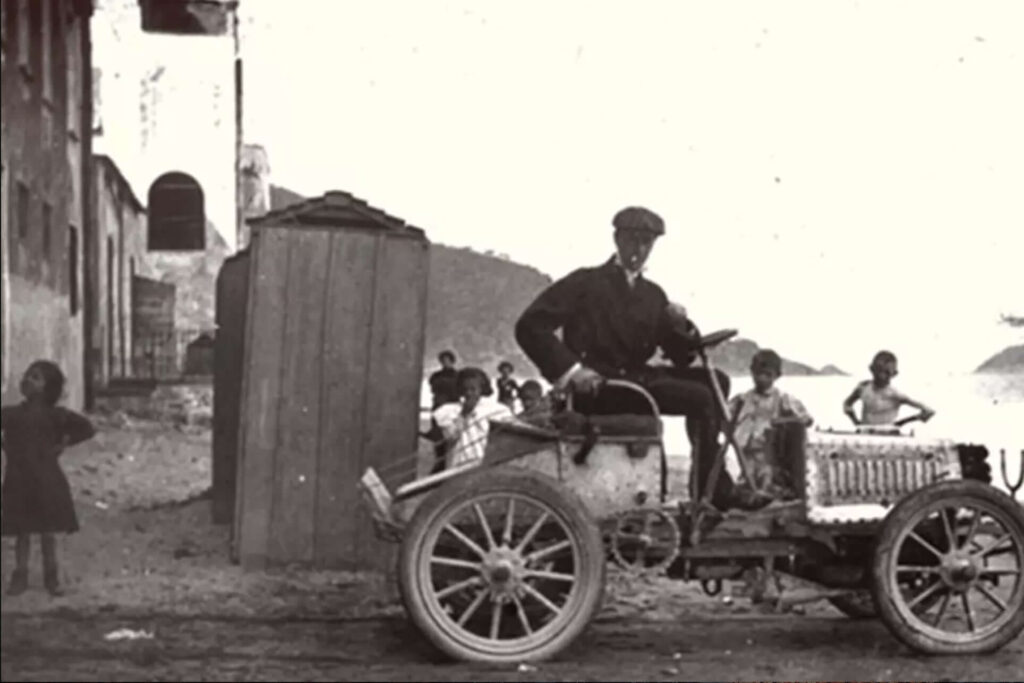
The young automobile manufacturer realized 10 more models in collaboration with known factories, moving around Europe. In 1909 he decided to return to Alsace and to found his own automobile factory.
His cars were always works of art combined with superb performance. The design was innovative for the time, and surprising to the public from the beginning. His own first successful car was the Type 13, so elegant that the wealthy society couldn’t help buying and flaunting it. The Bugatti trademark became synonymous with exclusivity and refinement.
The Type 41 Royale has to be mentioned, too. It has extraordinary dimensions, with a powerful motor and a good number of gold components. Only six cars were ever produced, and just three sold. Nevertheless, it became legendary.
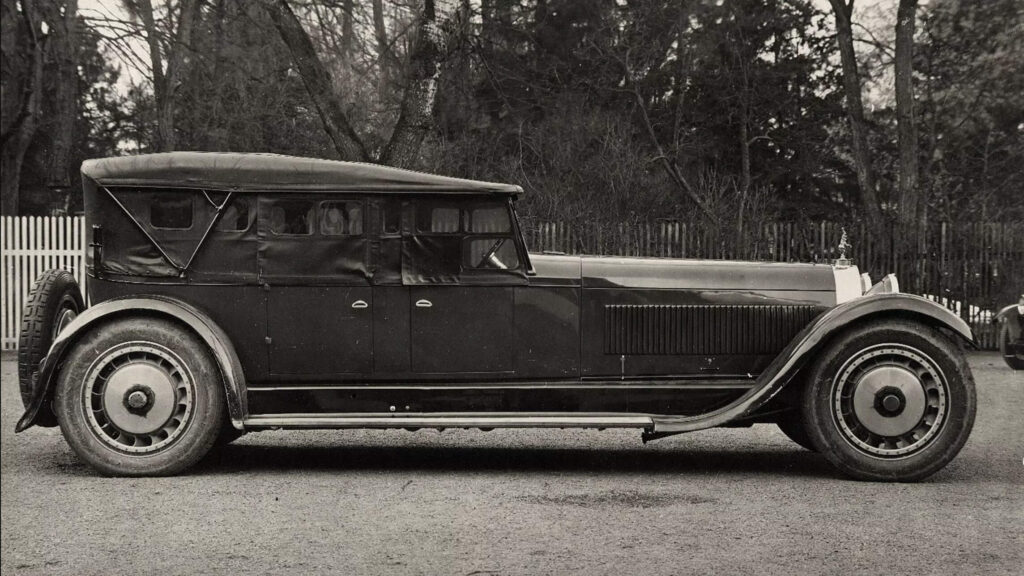
In the 1930s the company began participating in races, like Ettore had done in his younger years. Also this time, prizes came easily. The Type 35 in particular was an indisputable winner. It triumphed in the Monaco Grand Prix and in about other two thousand races, establishing a record still unmatched and bringing the Bugatti to the peak of its development. The reign of racing cars belonged to Ettore.
Like every sweet dream, it had to come to an end. In 1939 Jean, Ettore’s son, was testing the new Type 57 on the track when he was involved in an accident and died. This tragedy deeply affected Ettore and the whole Bugatti company. It marked the beginning of the decline.
The outbreak of World War II further complicated the situation and Bugatti had to sell his company. He had always refused to abandon his Italian citizenship and this prevented him from obtaining financial benefits related to the War, addressed to the French people. Furthermore, he suffered from pneumonia and died in 1947.
However, the legend did not stop there. The incredible artistic elegance joined with the extreme power of Bugatti’s automobiles captured another Italian, Romano Artioli. He bought the company in 1987 and gave it a second life. Despite a second bankruptcy, the Volkswagen group acquired the Bugatti company and it reached a new splendor.
In 37 years of activity, Ettore had registered more than a thousand patents and realized about 7800 automobiles. Around 2000 of these became collectors items and are still working, having broken numerous records.
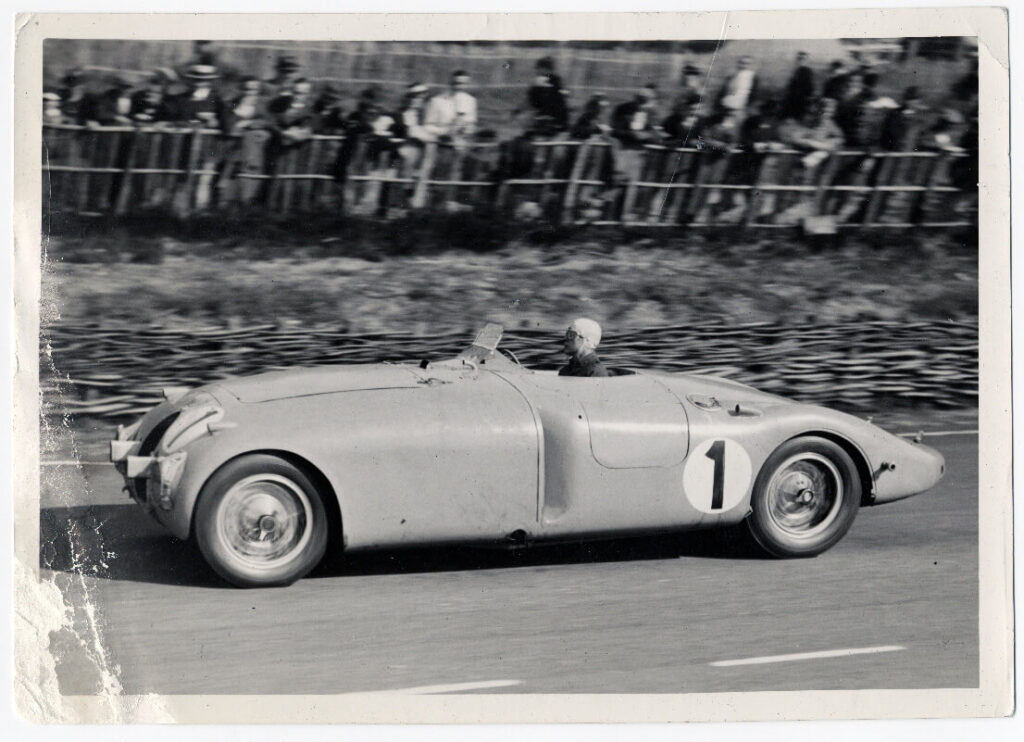
Extremely interesting: Ettore’s inventions were not exclusively car-related ones. He was also interested in everyday objects, which he upgraded including: a cylindrical razor, some security locks, and a new fishing rod. He did not patent many of his inventions because of their simple, personal purpose. Ettore Bugatti was fantastically creative… He was something like an artistic engineer!
Rembrandt Bugatti was born in Milan in 1884. His famous name was either the idea of his godfather, the sculptor Ercole Rosa, or following other authors of his uncle Giovanni Segantini.
Rembrandt soon showed his artistic talent. At an early age he began working on animal sculptures. However, he always had troubles in everyday life.
First of all, his father Carlo wished Rembrandt would become an engineer. Carlo probably felt his family was already full of artists. Nevertheless, one day he changed his mind. Under a damp cloth in Rembrandt’s studio, he found a sculpture. It was a beautiful representation of a shepherd guiding three cows. Rembrandt was just 14 years old.

In less than two years the young artist became an accomplished sculptor. He had already found his style and confirmed his preferred subject: animals. When he was just 19, he managed to show at the Venice Biennale.
In 1902 his family moved to Paris, where three years later he secured a contract with Adrien-Aurelién Hébrard. Hébrard was the owner of a famous art gallery and of the foundry where Rembrandt completed (with the lost wax technique) his pieces previously made with modeling clay. His models were the real animals he observed in the Jardin des Plantes in Paris. Hébrard showed little enthusiasm for Rembrandt’s sculptures though. He even thought that the artist was frightened by his own name: it carried too glorious a past.
Nevertheless, success arrived.
The turning point came in 1907. The Royal Society of Zoology (Société Royale de Zoologie), based in Antwerp (Belgium), invited him to take up residence there. He accepted and could work freely in Antwerp’s zoological gardens, one of the best zoos of the time. He could also exhibit and even sell his sculptures there. Rembrandt was so fond of the animals that he was even allowed to feed and care for them.
He established a natural empathy with his models, from baboons to elephants, from gazelles to lions. Not only mammals, also birds, reptiles, and species never represented in artworks before. It was an truly deep-felt love, in particular for felines.
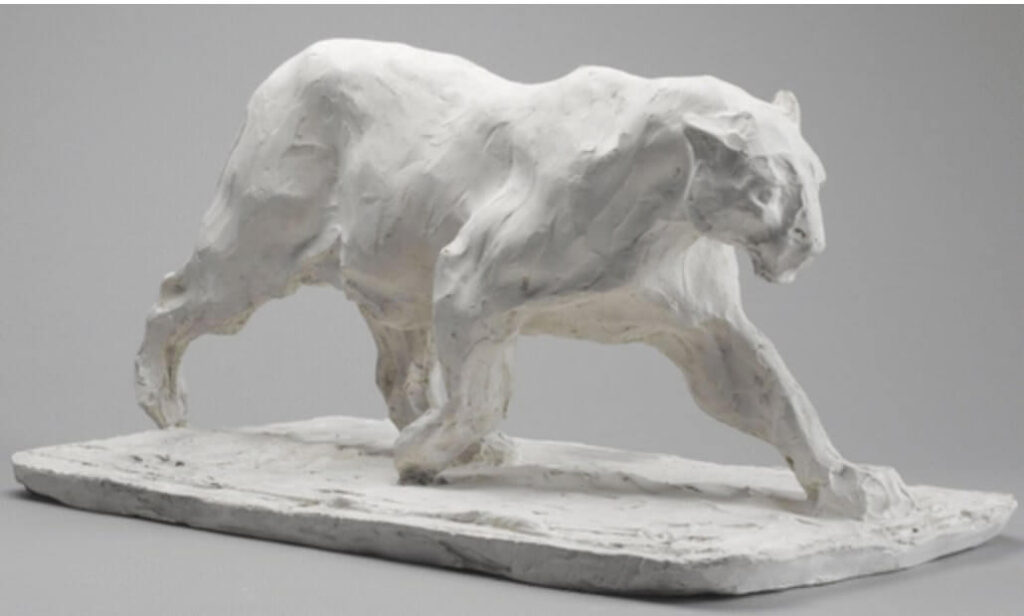
Critics and journalists began noticing Bugatti. They paid him respect and later showed admiration, particularly because of his relationship with animals and his will to immortalize them. He not only loved them, but also knew their habits exactly, their behaviors, their movements and expressions. Animals interested Rembrandt both as an artist and as a human being. As a result, he built an endless daily ritual of careful observation for representing wildlife in its whole reality. In other words, he always paid attention in respecting the differences between animals and human beings, without trying to humanize them. This was why he did not own any pets. He only hosted two antelopes from the zoo for a few weeks, and he did not name them.
The previous sculptors mainly realized their pieces in their studios. Bugatti had a different approach, he observed and interacted with his models before portraying them in situ. Another key-point underlying the difference between Rembrandt’s and others’ works was the particular modelling clay he used, plastilina. It was more malleable and did not harden quickly. This gave him more time to create and perfect his sculptures. Also it allowed Bugatti to sculpt directly in the zoo at his own pace, being both more expressive and more precise.
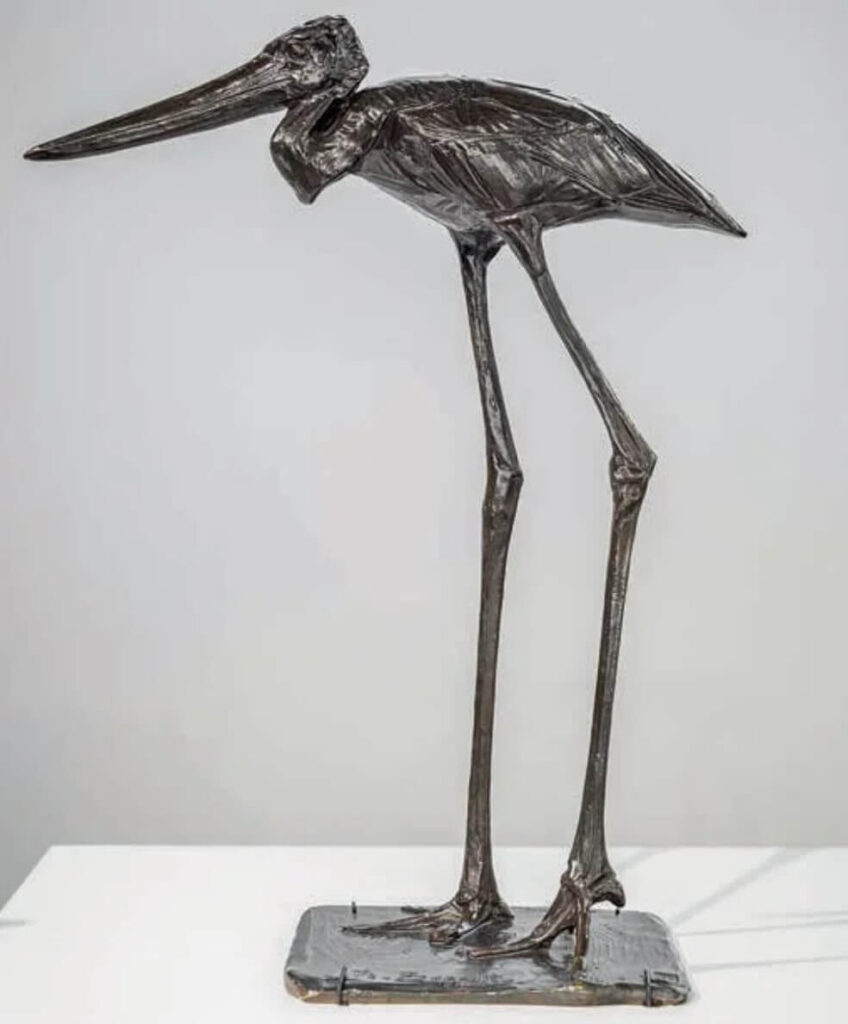
Bugatti received a Légion d’Honneur from the French government in 1911 for his artistic contributions. He was just 27 years old at the time. This is just one marker of how popular he was in the first years of the 20th century, although nowadays he seems to have been forgotten.
Rembrandt fell sick, suffering both from depression and tuberculosis, (which was incurable at the time). Moreover, he was shocked by the outbreak of World War I in 1914 and was obliged to return to Paris. Meanwhile, his beloved zoo closed and the director had to kill some animals because food was so scarce.
Without the company of the hosts of the zoo, excluded from the society of human beings, Bugatti died of suicide in 1916. He was not yet 33 years old.
Rembrandt had a short but powerful career, centered on animals and wildlife. Nowadays, some 300 of his works survive.
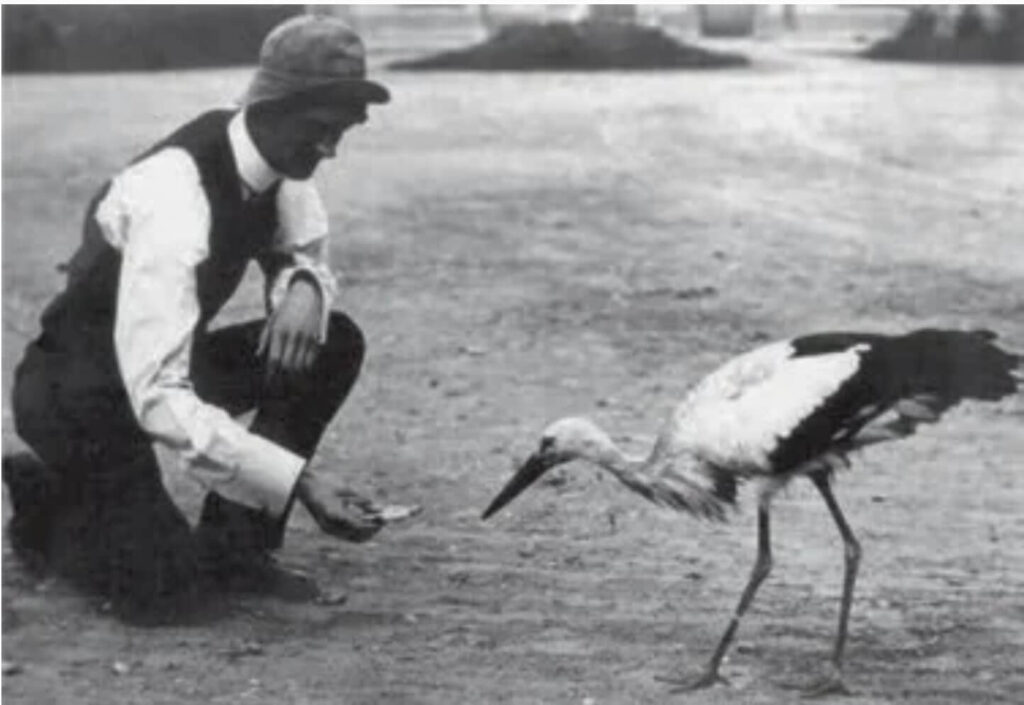
As previously said, in 1909 Ettore founded the Bugatti automobile firm.
In a beautiful moment of sibling collaboration, Rembrandt created the elephant mascot for the bonnet of the classic Bugatti Royale. The source of inspiration was an African elephant, Rachel, that the artist had met in the zoo in Paris. The same animal also inspired a famous sculpture in a similar pose.
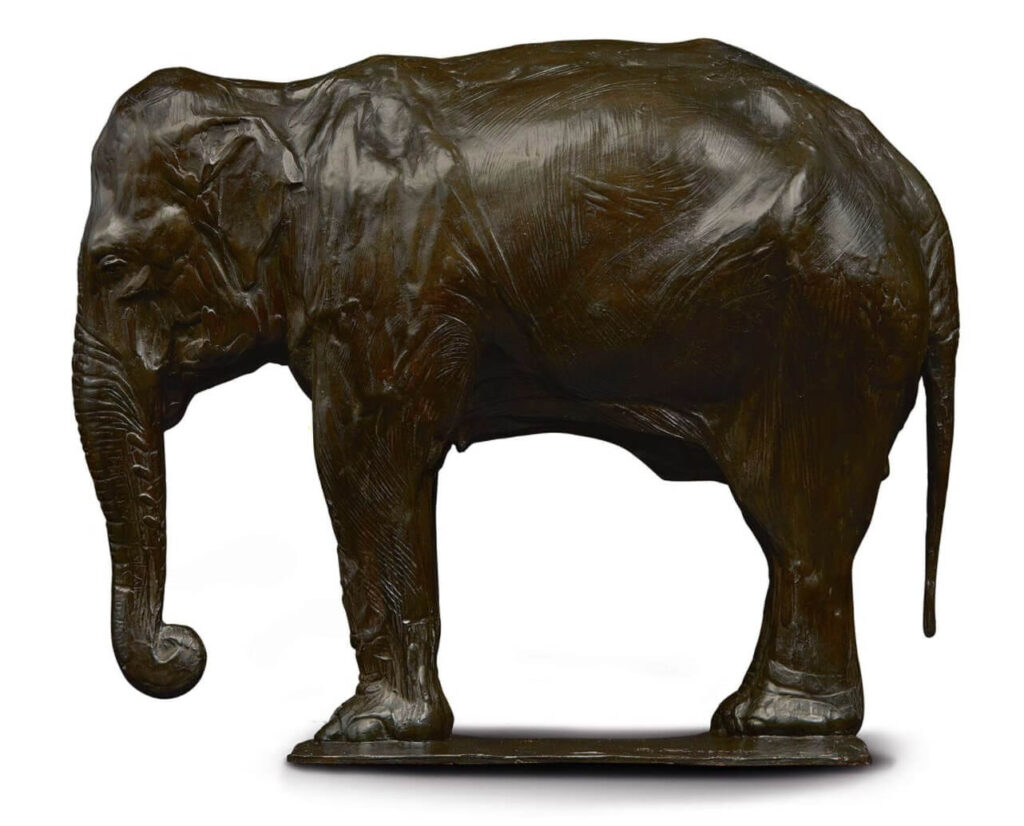
DailyArt Magazine needs your support. Every contribution, however big or small, is very valuable for our future. Thanks to it, we will be able to sustain and grow the Magazine. Thank you for your help!